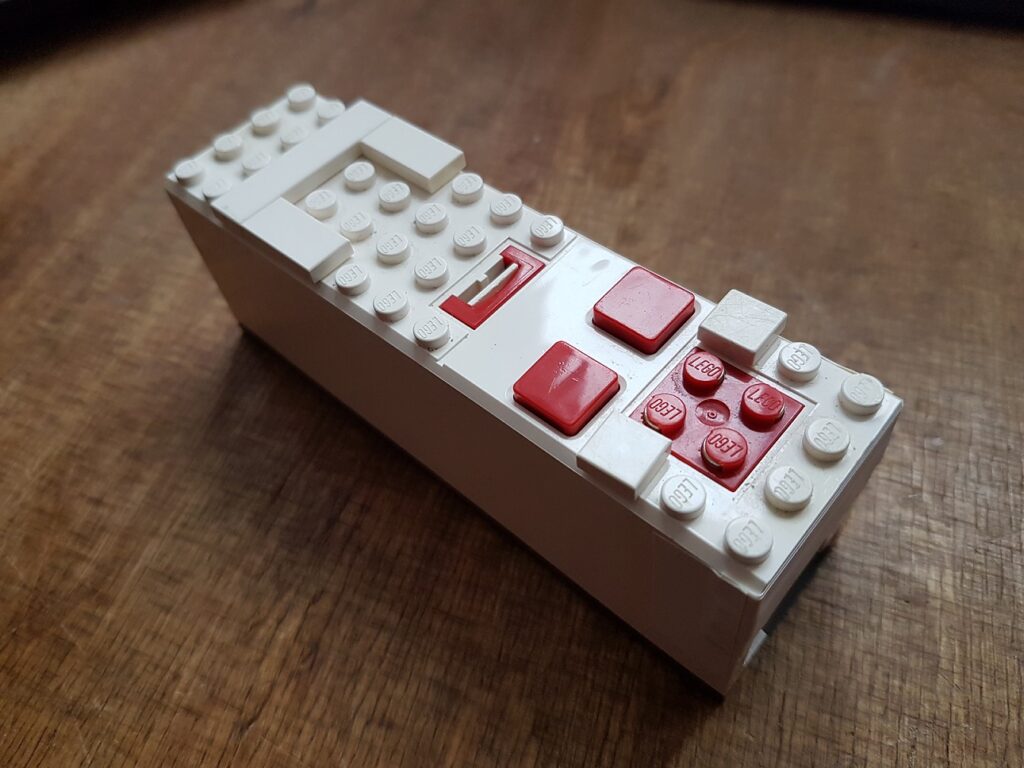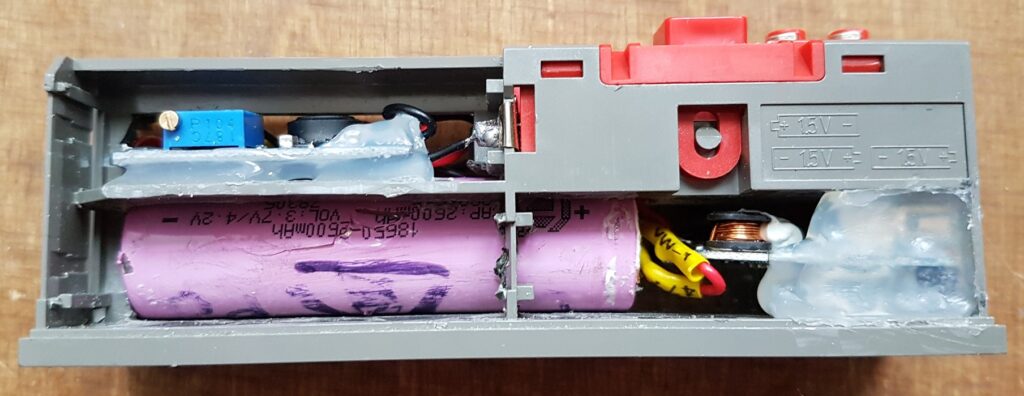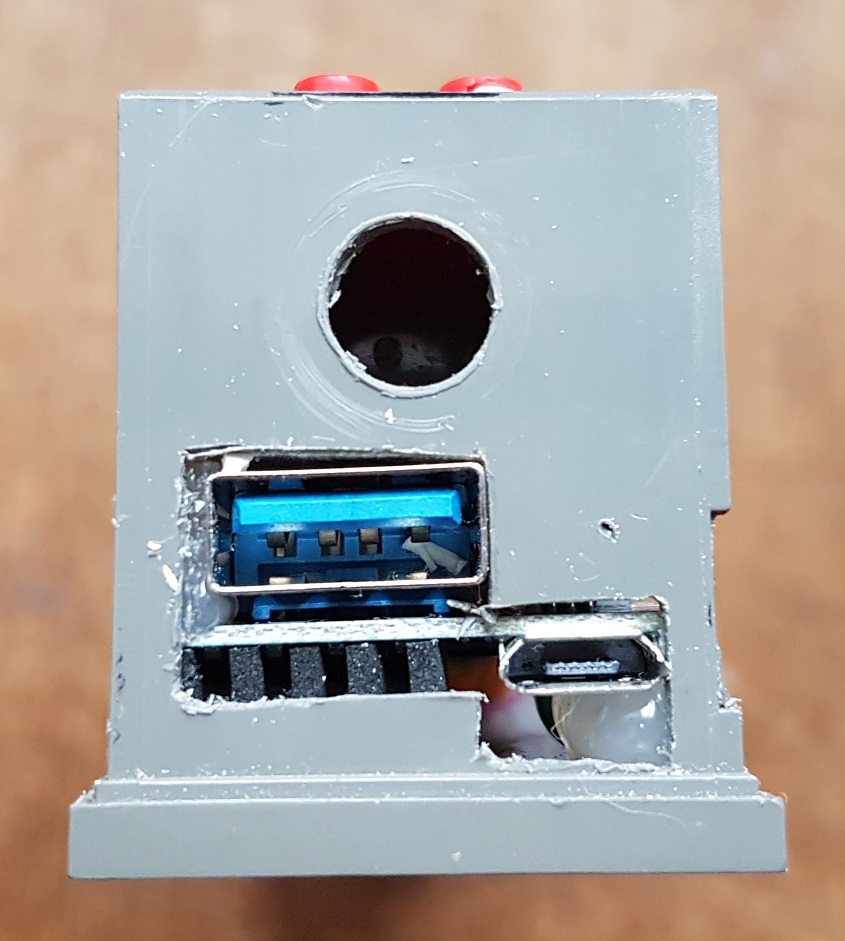Do you remember the good times of LEGO? Or even LEGO Technic? Turns out that LEGO is a timeless classic and still very much fun.
What is not timeless however, is battery technology. Several old LEGO models are powered by 9 Volts via six 1.5 AAA batteries. This proved to be cumbersome, because the batteries would drain quickly or even leak. So, to circumvent this, one could add a low-voltage power plug to the LEGO power delivery brick.

Now your LEGO model is attached to a power cable, which kind of invalidates the whole existence of a bower brick in the first place. So I opted to use modern LiPo/USB technology to bring this brick back into service.
The Conversion
Because the brick has an output voltage of 9V, we need some kind of step up or boost converter, which can provide a stable output voltage while delivering an accteptable current. It also has to take in a varying input battery voltage. For my chosen LiPo battery that I found in a drawer, this voltage would be about 3.7V to 4.2V.
I chose a MT3608-based converter, which has an adjustable output voltage ( https://www.amazon.de/gp/product/B07KW61VYM, ~1€). The LiPo battery and USB charging PCB were ripped from an old USB mobile powerbank. The battery has a nominal capacity of 2.5 Ah, which is plenty for this use.
First, I cut / melted out the plastic internals of the brick and removed the old battery clips. Then I soldered the voltage converter directly to the battery, thus bypassing the USB charging circuit and reducing power conversion loss. Then I made a small hole at the top side of the brick to access the USB ports, and glued everything into place using hot glue.


After closing everything back up and giving the brick a facelift using white electrical tape, it looked almost like before.
Testing
And it works! A stable supply of 9 Volts really gets those small LEGO motors going. The direction switching buttons required some fiddeling, because the internal metal contacts had to be bent just right.
And you can even charge your phone using the USB-A output port, how cool is that.



